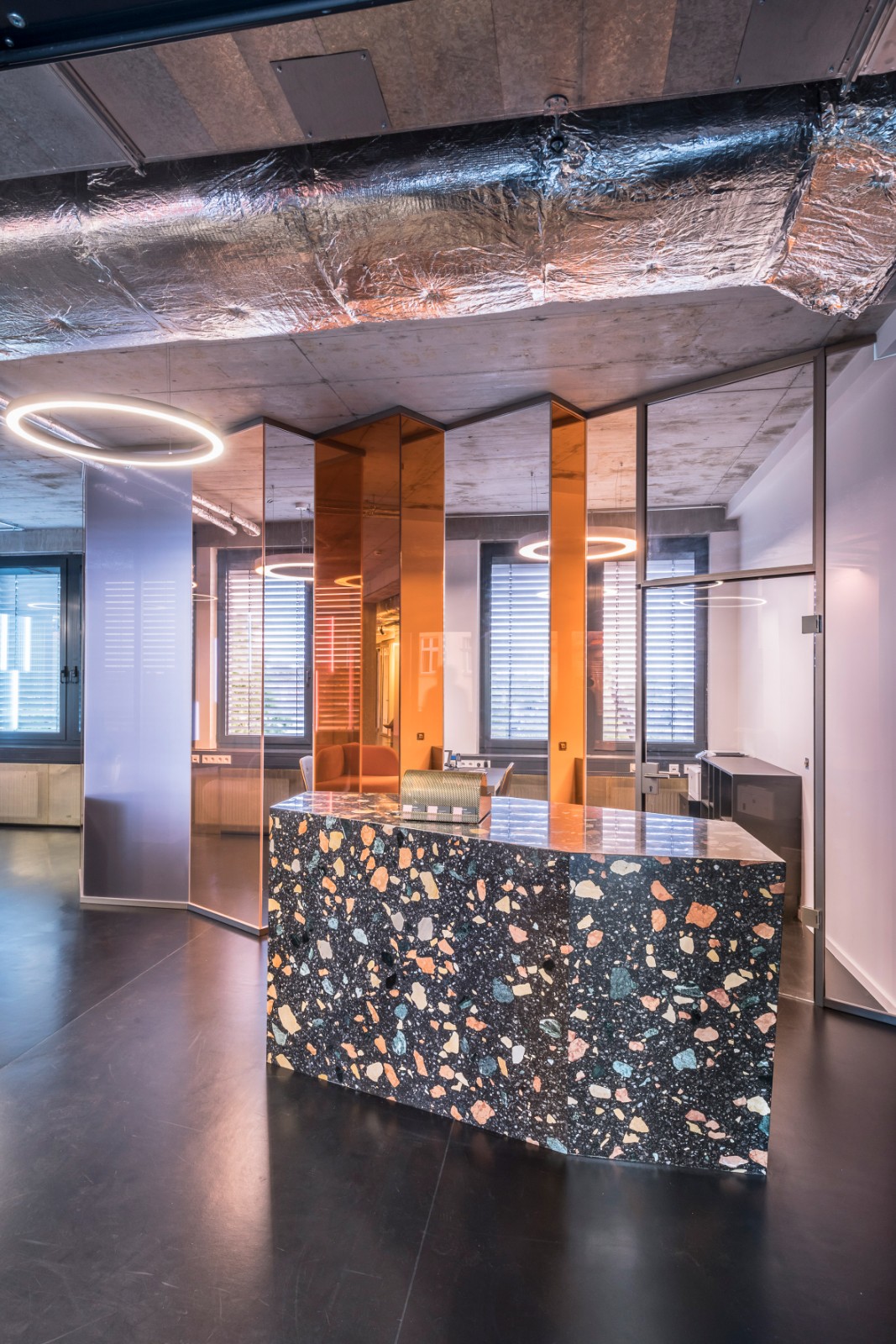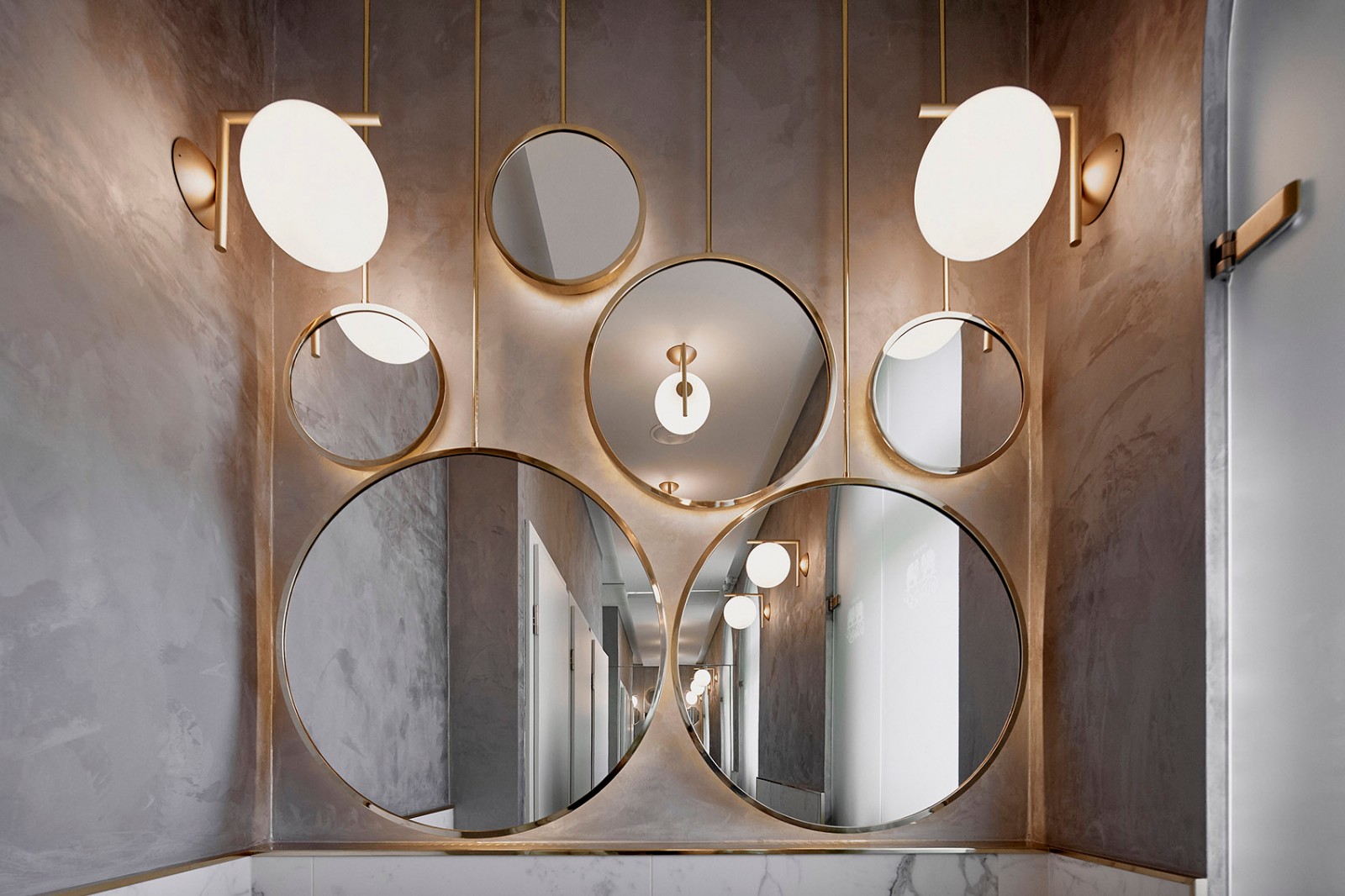Chris O’Brien Lifehouse HDR Rice Daubney
2014-10-20 01:00
架构师提供的文本描述。ChrisO‘BrienLifehouse(Lifehouse)采取了一种创新的癌症护理方法,以新的方式关注澳大利亚的患者体验。它是该国第一个综合性癌症治疗中心,在一个地方提供病人所需的一切,包括流动医疗、联合卫生、临床试验、研究、教育、辅助疗法和心理社会支持。虽然与皇家价格阿尔弗雷德医院的现有功能和悉尼大学的研究设施相结合,但Lifehouse是一个私人的、非营利的设施,为私人和公共病人提供服务。这是一个注册的慈善机构,所有收入都用于病人护理的再投资。
Text description provided by the architects. The Chris O’Brien Lifehouse (Lifehouse) takes an innovative approach to cancer care that focuses on the patient experience in ways new to Australia. It is the first integrated cancer treatment center in the country, offering everything a patient needs in one place, including ambulatory care, allied health, clinical trials, research, education, complementary therapies and psycho-social support. Although integrated with the existing functions of the Royal Price Alfred Hospital and research facilities at The University of Sydney, Lifehouse is a private, not-for-profit facility serving both private and public patients. It is a registered charity, and all income is reinvested for the benefit of patient care.
Lifehouse是实现克里斯·奥布赖恩(ChrisO‘Brien)的愿景,他是悉尼的头颈肿瘤学家。2006年,在命运的残酷转折中,克里斯被诊断出患有恶性脑瘤,并从他的位置上辞职,专注于他的治疗和治疗。但他把自己的逆境变成了一个全国性的机遇,利用自己的经历为癌症患者及其家人努力奋斗,并倡导将研究和治疗结合在一起的癌症护理。2009年,克里斯在与癌症的斗争中失败,但他的愿景在生命之家实现了。
Lifehouse is the realization of the vision of Chris O’Brien, a leading Sydney-based head and neck oncologist. In 2006, in a cruel twist of fate, Chris was diagnosed with a malignant brain tumor and stepped down from his position to focus on his therapy and treatment. But he transformed his personal adversity into a national opportunity, using his experience to fight harder for cancer patients and their families and to advocate for cancer care where research and treatment are integrated. In 2009, Chris lost his battle with cancer, but his vision was brought to fruition in Lifehouse.
“生命之家”的目标很简单:让癌症患者的生活变得更容易,这样他们就不会感到孤独,在应对疾病的混乱因素中独处;把新的发现转化为更好的癌症护理;当然,最重要的是,为没有癌症的未来铺平道路。
The goals of Lifehouse are simple: to make things easier for people with cancer so they do not feel alone navigating the confusing elements of dealing with their illness; to turn new discoveries into better cancer care; and of course, most importantly, to pave a way toward a future without cancer.
不寻常的澳大利亚医院,生命之家是一个9层的垂直结构。由于垂直的安排,设计团队花费了大量的时间使病人的旅程尽可能自然和舒适。谨慎的停车,像酒店一样的门房,宽敞的等候区,现代化的设计完成,丰富的自然光,和直观的道路寻找支持一个积极的经验,当病人进入和导航的建筑物。
Unusual for Australian hospitals, Lifehouse is a nine-story vertical structure. Because of the vertical arrangement, the design team spent a considerable amount of time making the patient journey as natural and comfortable as possible. Discreet parking, a hotel-like concierge, expansive waiting areas, modern design finishes, an abundance of natural light, and intuitive wayfinding support a positive experience as patients enter and navigate the building.
建筑物内的所有空间都围绕着一个中央中庭旋转,中央中庭贯穿所有九层楼,其中包括一个膨胀的天窗,它能在整个建筑中散发出自然的光。所有的公共垂直循环都通过这个空间进行,这是临床医生和研究人员的合作领域,也是病人和访客的社会互动场所。玻璃电梯连接地板,提供对设施运作的微妙的一瞥,以及下面楼层的戏剧性景观。穿孔金属是一个反复出现的设计元素,在中庭,以及在等待空间和外部面板;模式是基于盲文文字的“生命之家”。
All spaces within the building revolve around a central atrium that rises up through all nine floors and includes an expansive skylight that diffuses natural light throughout the building. All public vertical circulation feeds through this space, which acts as a collaboration area for clinicians and researchers and a place of social interaction for patients and visitors. Glass elevators connect the floors, offering subtle glimpses into the operation of the facility and dramatic views of the floors below. Perforated metal is a recurring design element in the atrium, as well as in the waiting spaces and on exterior panels; the pattern is based on the braille text for the word “Lifehouse.”
该设施的垂直顺序反映了功能-流动设施位于较低层,急诊室和支助区位于中段,前两层为住院病人;96间私人房间是在这个“优质房地产”中有目的地规划的,目的是从广阔的景色中获益。许多房间还可以进入私人的外部庭院和疗伤花园。该设施的研究部分位于住院区域下面的一层,鼓励医生和研究人员之间的合作,并加快从发现到应用的治疗。
The vertical order of the facility reflects functionality—ambulatory facilities are on the lower levels, acute and support zones are in the mid section, and the top two levels house inpatients; the 96 private rooms were purposefully planned in this “prime real estate” to benefit from the expansive views. Many of the rooms also have access to private external courtyards and healing gardens. The research components of the facility are located on a floor below the inpatient areas, encouraging collaboration among doctors and researchers and accelerating treatments from discovery to application.
“生命之家”包括一个名为“生命之家起居室”的空间,用于提供支持服务、教育和治疗,这些支持服务、教育和治疗可以与临床护理一起使用,以帮助管理治疗的副作用。该中心由英国的玛吉中心(M吉‘s Center)提供。该中心是一个为癌症患者提供支持、信息和实用建议的中心。位于一楼,提供按摩、瑜伽、针灸、灵气和启功等疗法。同样位于一楼是一个非教派的“反射空间”,为病人及其家属提供一个私人和独立的地方来对诊断作出反应。
Taking inspiration from the Maggie’s Centers in Great Britain—a network of centres created to provide support, information and practical advice to those affected by cancer—Lifehouse includes a space called the Lifehouse Living Room to house supportive services, education and treatments that can be used in partnership with clinical care to help manage the side-effects of treatment. Located on the ground floor, the space provides therapies such as massage, yoga, acupuncture, Reiki and Qi Gong. Also located on the ground floor is a non-denominational “reflection space,” offering a private and discrete place for patients and their families to respond to a diagnosis.
这种规模的建筑的引入需要经过深思熟虑的设计反应。为了降低整体高度,在街道下面设置了一个临床部门,通过凹槽的景观庭院引入自然光,连接建筑边缘。街道的立面由两个透明的层组成,上面覆盖着有图案的碎玻璃,它向后倾斜,打破了整体质量,并对行人的规模做出了反应。向北的水平玻璃叶片平衡了南面百叶窗的垂直度,提供了质量上的多样性,并创造了生动的设计。
The introduction of a building of this scale into the context required a thoughtful design response. To reduce the overall height, a clinical department was set below street level with natural light introduced through recessed landscape courts articulating the building edge. The street façade, which consists of two transparent levels clad in patterned fritted glass, is set back, breaking up the overall mass and responding to the scale of pedestrians. The horizontal glazed blades to the north balance the verticality of the louvers to the south, providing diversity among masses and creating a lively design.
整体建筑在概念上是封闭和保护的,而不是内向的。外立面分层,百叶窗,图案玻璃和穿孔屏幕允许丰富的自然光穿透建筑物,同时为病人提供隐私,从外面。该建筑的设计从来没有试图复制现有的遗产结构的邻近建筑物,其中包括一个独特的混合维多利亚砖墙外观和艺术装饰建筑。相反,釉面更多的是反射和尊重现有织物的规模和细节。这座建筑承认阿尔弗雷德王子的校园而不是街道,是未来研究区的重点;这座建筑和主要入口定位于主要医院校园,为公共领域提供了一个活跃但安全的边缘。
The overall building is conceptually enclosing and protective without being introverted. The exterior façade layering, louvres, patterned glass and perforated screens allow abundant natural light to penetrate the building while providing patients with privacy from those on the outside. The design of the building never attempted to replicate the existing heritage fabric of neighboring buildings, which include a unique blend of Victorian brick facades and art deco buildings. Rather, the glazed facades are more about reflecting and respecting the scale and detail of the existing fabric. Acknowledging the Royal Prince Alfred campus rather than the street, the building is the focus of a future research precinct; the building and main entrance orientate to the main hospital campus and provide an activated yet secure edge to the public domain.
 举报
举报
别默默的看了,快登录帮我评论一下吧!:)
注册
登录
更多评论
相关文章
-

描边风设计中,最容易犯的8种问题分析
2018年走过了四分之一,LOGO设计趋势也清晰了LOGO设计
-

描边风设计中,最容易犯的8种问题分析
2018年走过了四分之一,LOGO设计趋势也清晰了LOGO设计
-

描边风设计中,最容易犯的8种问题分析
2018年走过了四分之一,LOGO设计趋势也清晰了LOGO设计


















































































